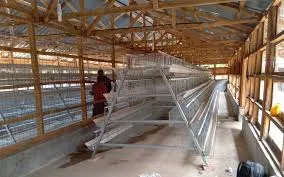cattle feed mixer
Oct . 13, 2024 21:37 Back to list
cattle feed mixer
Understanding Cattle Feed Mixers Essential Tools for Livestock Nutrition
Cattle feed mixers are essential equipment used in the livestock industry to ensure that cattle receive the right nutrition tailored to their needs. With the growing demand for efficient and effective livestock farming, these machines play a pivotal role in optimizing feed formulation and enhancing the overall health of cattle.
The primary function of a cattle feed mixer is to blend various feed ingredients, including grains, supplements, vitamins, and minerals, into a uniform mix. This process is crucial because cattle require a balanced diet to grow healthily, produce quality milk, or reach market weight effectively. By providing a well-mixed ration, farmers can maximize feed efficiency, improve weight gain, and ultimately increase productivity.
Cattle feed mixers come in several types, each designed to meet specific needs and operational scales. The most common types include vertical mixers, horizontal mixers, and mobile mixers. Vertical mixers use a vertical auger to ensure thorough mixing of ingredients, while horizontal models feature a horizontal auger and typically allow for larger batches. Mobile mixers offer the added benefit of being able to combine feed on-site, which can save time and reduce transportation costs.
One of the significant advantages of using a cattle feed mixer is the ability to customize feed formulations based on the specific requirements of different cattle groups
. For instance, dairy cows may require a higher percentage of protein, while beef cattle may need more energy-dense feeds. By using a mixer, farmers can adjust the recipe to meet these varying nutritional needs, contributing to better animal health and productivity.cattle feed mixer

Moreover, well-mixed feed ensures uniform consumption among the herd, which is vital for preventing health issues related to nutritional imbalances. When cattle receive inconsistent diets, it can lead to digestive problems, reduced weight gain, and lower milk production. Therefore, using a feed mixer helps to maintain consistency in cattle diets, improving overall herd performance.
In addition to direct nutritional benefits, cattle feed mixers can significantly reduce labor costs and time spent on feed preparation. Manual mixing is time-consuming and prone to errors, which can compromise feed quality. Automated mixers streamline this process, allowing farmers to allocate their resources more efficiently and focus on other essential aspects of livestock management.
Furthermore, the incorporation of technology in modern cattle feed mixers, such as weighing systems and software for tracking feed intake and nutrition analysis, has revolutionized the feeding process. These innovations enable farmers to make data-driven decisions, ensuring that their cattle receive optimal nutrition based on real-time analysis.
In conclusion, cattle feed mixers are invaluable tools for modern livestock farming. They not only enhance dietary efficiency and herd health but also optimize labor and resource management. As the industry continues to evolve, embracing technological advancements in feed mixing will be crucial for producers aiming to meet the demands of a growing global population while delivering high-quality livestock products. By investing in the right feed mixer, farmers can significantly contribute to the sustainability and productivity of their operations.
-
Hot Sale 24 & 18 Door Rabbit Cages - Premium Breeding Solutions
NewsJul.25,2025
-
Automatic Feeding Line System Pan Feeder Nipple Drinker - Anping County Yize Metal Products Co., Ltd.
NewsJul.21,2025
-
Automatic Feeding Line System Pan Feeder Nipple Drinker - Anping County Yize Metal Products Co., Ltd.
NewsJul.21,2025
-
Automatic Feeding Line System - Anping Yize | Precision & Nipple
NewsJul.21,2025
-
Automatic Feeding Line System - Anping Yize | Precision & Nipple
NewsJul.21,2025
-
Automatic Feeding Line System-Anping County Yize Metal Products Co., Ltd.|Efficient Feed Distribution&Customized Animal Farming Solutions
NewsJul.21,2025






